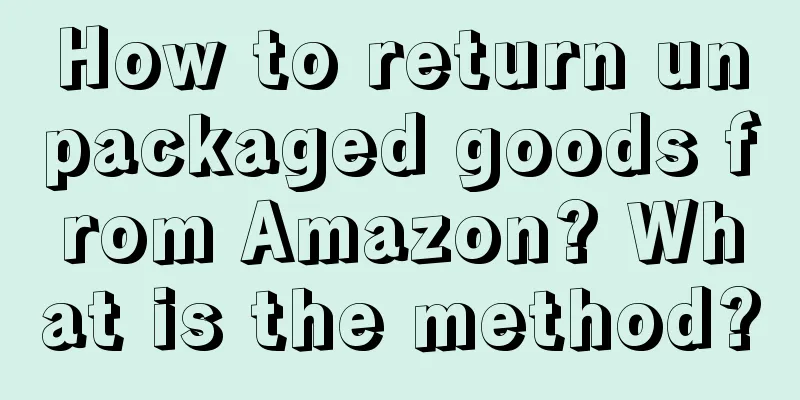Improve conversion rate by 90% and build a private domain label system from 0 to 1

Nowadays, private domain operations have gradually become a standard or even a necessity for enterprises. However, most companies are just following the crowd in doing private domain business, and few of them can really think clearly about the goals and value of doing private domain business. Either they spend a lot of money to build a team, but have no operational focus, and the final conversion effect is very poor; or they don’t pay much attention to it, and it is difficult to achieve results with little manpower and energy investment. In fact, the core purpose of private domain is to tap into the lifetime value of customers. From the perspective of customer value, 20% of users can contribute 80% of the revenue, so concentrating resources on key customers is the best solution. Therefore, by doing a good job of "user segmentation", identifying "key" customers, and serving them well, you can maximize user value. Among them, establishing user tags is the most important task in user stratification. After fully understanding the users through different tags, they can be divided into different dimensions and stratified. However, different industries and companies of different sizes naturally require different label dimensions. For example, Xibei may pay more attention to users' tastes, food preferences, and regional culture; while hotel companies are different. Huazhu Hotels may pay more attention to users' occupations, sleeping habits, and special requirements. So how should companies label users and build a private domain labeling system? 1. Four dimensions of labelsFirst, start with labeling. For the majority of retail companies, in actual private domain operations, they can usually label from four dimensions: channel source, user level, demographic attributes, and consumption information, and then segment the labels according to the differences of each company. Below I will give examples of these four dimensions one by one. 1. Channel sourceA clear channel source makes it easier for companies to communicate with users and judge their purchasing power and familiarity with the company. Channel sources can usually be divided into online and offline. If further divided, online channels include Taobao, Tmall, JD.com, Douyin, Kuaishou, etc., and offline channels are divided into direct stores, franchise stores, marketing activities, etc. 2. User LevelThis is the basis for judging whether a user needs preferential treatment. With user levels, companies can provide targeted services and benefits for users of different levels. This differentiated preferential treatment will make senior users feel more distinguished and superior, and will also create motivation for other users, encouraging them to obtain more user privileges through more and more lasting consumption. The RFM model can be used here. It combines the three dimensions of Rencency (most recent consumption), Frequency (consumption frequency), and Monetary (consumption amount) to classify users into levels. 3. Population attributesThis label dimension can be subdivided into sub-dimensions such as region, place of origin, age, height, weight, marital status, occupation, birthday, family situation, etc. Different companies will use different sub-dimensions. Taking the catering industry as an example, Xibei may not pay attention to height, weight, etc., but pay more attention to information such as region, occupation, marital status, family size, etc. Knowing the region can help Xibei analyze the customer's eating habits, and knowing the marital status can roughly infer whether the customer has children and whether a baby chair is needed. 4. Consumption InformationThere are also many sub-dimensions under this label dimension, which includes all information related to products and services. For example, consumption capacity, product purpose, consumption frequency, product color, product size, quality requirements, product price, whether special services are enjoyed, etc. It is also necessary to choose which specific information to label according to enterprises in different industries. The following is an example of a user's tags:
In private domain operations, it is best for enterprises to design a label model before establishing the private domain operation process. Start with the four major label dimensions, establish a set of commonly used label models, implement them, and then gradually improve and enrich them. It should be noted that as the maker of the labels, employees need to be trained regularly to facilitate the operation of the operations team and ensure that every front-line employee can use it without making mistakes. When business personnel see these user tags, they can immediately know the user's basic information and then provide personalized services. 2. Application of labelsAfter labeling, the operation has just begun. With user labels, we can better combine labels for refined operations when conducting private domain operations. There are usually four application scenarios for labels: 1. Accurate pushTaking the operation of customer WeChat Moments as an example, operators can specify tags that are visible to users so that messages can reach them accurately, thus achieving targeted push in WeChat Moments. Regularly organize some welfare activities in customer circles and WeChat groups, and specifically invite users with a certain tag to participate, so as to improve the efficiency of community operations and the accuracy of marketing. If it is a fixed copywriting marketing push, it can be automated, such as membership expiration reminders, silent warning reminders, and lost member recalls. 2. User characteristics insightsUser portraits are an important tool for understanding users. They can help business personnel quickly gain information about users, discover significant features, and gain business inspiration. 3. Enhanced data analysisWe can do analysis in many dimensions through labels. For example, by gender or industry, if you use the user's first source as a label, you can also understand the user's channel information. User tags (user attributes) can be used as a segmentation dimension to support multi-perspective data display. 4. Data product applicationUser tags are the basis of many data products, such as personalized recommendation systems, intelligent operation platforms, advertising systems, CRM systems, etc. Take Starbucks as an example: By analyzing the user's historical SKU purchase data, Starbucks calculated the user's taste preferences and based on this, launched the "Daily Standard" and "Know What You Like" features on the Starbucks App. “Daily Standard” allows users to make habitual choices efficiently when using Starbucks takeaway service, effectively improving conversions. "Knowing What You Like" can guide consumption upgrades (American → cold brew) or bundled sales of pastries based on users' taste habits, thereby "elegantly" increasing customer orders. The trend of money-burning marketing has passed. Now more and more companies are beginning to return to rationality. Finding the pain points and itch points of each user and providing marketing stimulation based on individual differences is the best way to improve ROI. 3. Effectively obtain label informationAlthough a labeling system is essential for private domain companies, not every company can do user labeling. The user tag system is not ready for use. It requires an experienced team to adapt to the company's business processes in order to establish a valuable and feasible user tag system. At the same time, without a certain level of behavioral data collection capabilities, label calculation will be useless. There are usually two ways to obtain user tag information: The first is to extract from past consumption information and then automatically filter it. The company designs the label words in advance, and the system automatically compares them and tags the user accordingly. For example, for consumption frequency, as long as the data from Taobao, JD.com, and offline stores are captured, the company can identify how many times the user has consumed. Similarly, the most recently purchased products, the region where the purchase was made, color preferences, etc. can all be identified by relying on system automation and screening of consumption behavior data. However, even though the technology is so advanced and semantic analysis technology is already very mature, domestic CRM cannot yet achieve the above-mentioned intelligent level, mainly because the data between domestic platforms is not connected, forming user data islands. But automatic label filtering is undoubtedly a future development direction. The second is to communicate with users through operations personnel, consciously guide and record, so as to obtain the label dimension information needed by the enterprise. This depends on the power of people, especially those who can chat, communicate, and observe. To obtain consumer information through this method, companies usually design questions in advance, then train customer service or user operation personnel, and stipulate how long the operation personnel need to complete the information, which will also serve as an indicator to test the work of the operation personnel. For example, we once served a diamond brand company that wanted to know the user's birthday. The solution we provided was: Before guiding users to enter the private traffic pool, tell them in the introductory message that the company will give them a mysterious exclusive gift on their birthday. In this way, after entering the private traffic pool, users will take the initiative to tell the company their birthday. Even if a small number of people forget to tell, the company can take the initiative to ask. Taking advantage of this opportunity, companies can also chat with users about other content, capture more desired information, and then fill it into the user's tag information one by one. There is also a situation where business operations personnel do not need to communicate directly with users, they just need to observe. For example, when cleaning the room, the hotel staff can discover some of the guests' preferences, such as that the black tea in a certain guest's teacup is often used up, or that a certain guest always requests a few more bottles of mineral water. The service staff can observe and record these details in the user files. When the guest comes to check in next time, the hotel can make arrangements in advance without the guest's reminder. Not only that, the hotel can also continuously update the data based on customer feedback after providing customized services. 4. Final ThoughtsToday, Chinese enterprises are striding towards the digital age, which not only means that information transmission is more efficient and rapid, but also means that information distribution can be more accurate. The ultimate core competitiveness of all businesses is efficiency, that is, both effect and speed. Therefore, only by constantly segmenting, stratifying, and labeling users can companies conduct precise marketing, reduce costs and increase efficiency, improve user experience, and win user satisfaction and recognition. Author: Yan Tao, WeChat public account: Yan Tao Sanshou |
<<: Between the platform and the anchor, whose low-price ability is more vulnerable?
Recommend
How to make your brand younger
After a company's brand enters the mature stag...
How can Amazon sellers check their account balance? Where can they check their balance?
Merchants need to register an account to log in to...
Is Shopee's store ID important? How to check it?
For sellers who are opening and operating a Shopee...
AI writes articles with more than 100,000 views, relying on these secrets
In the digital age, AI technology is gradually pen...
Can I cancel my Lazada account? What happens if my account is deactivated?
For cross-border e-commerce, if the store is well ...
How to check the logistics of Amazon shipments? Method introduction
After receiving an order from a customer, Amazon m...
How to get an Amazon bank statement? Where to get it?
If Amazon merchants need to verify their bank acco...
Top 10 Marketing Keywords in the First Half of 2023: A surge in popularity and a chaotic battle
This article summarizes the top ten changes in Chi...
Which holiday does Amazon offer the biggest discounts? How is the commission calculated for discounted products?
On the Amazon platform, as sellers, we can promote...
Data drives business, I summarized the whole process of standardization
The term "driving business" is a term th...
Shopee Malaysia 88 Big Sale Launches Grand Prize Sprint Event
Shopee Malaysia’s 88 Big Sale Grand Prize Sprint E...
How often is Amazon IPI updated? What is it?
There are now a lot of merchants opening stores on...
Heze South Station was only popular for 10 days, but Guo Youcai has become popular 3 times
Every once in a while, a new "Internet celebr...
To operate the user in a refined manner, it is enough to do these two things well.
What is user-based refined operation? How can we a...
Why does Amazon only sell one order a day?
Amazon merchants sometimes encounter a sudden surg...









